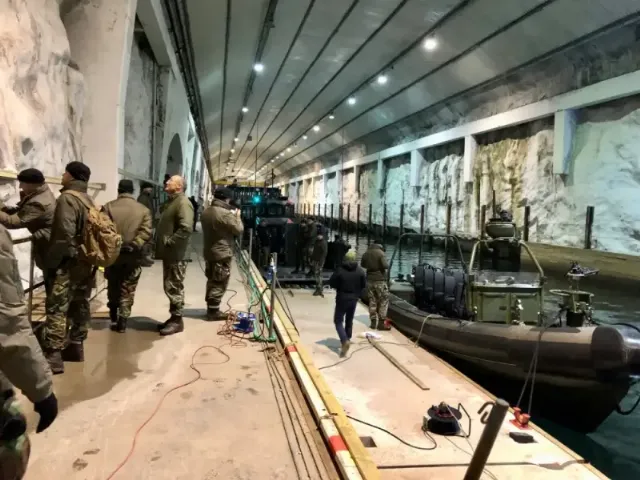
Image source: topwar.ru
The Norwegian-owned underground naval base Olavsvern has been of interest to Washington for decades, which would like to use it for operations in the Arctic of its submarines. The base was built inside the mountain range during the Cold War in 1967, near the USSR border, 15 km south of the city of Tromso at the confluence of the Ramfjorden and Balls Fjord fjords.
During the Cold War, the base was used mainly by American submarines patrolling the Arctic Ocean. The complex lost its status as a naval base in 2002 and was closed in 2009 by the government of Jens Stoltenberg, who later became NATO Secretary General.
On October 15, 2020, the Norwegian NRK TV channel disseminated information about the possible transfer of the Norwegian underground submarine base Olavsvern to the long-term lease of the US Navy. In the case of such an agreement, the Pentagon would have the opportunity to deploy its Seawolf-type nuclear submarines as close as possible to the Russian borders. However, the deal never took place.
The online military-related news magazine The War Zone (TWZ) writes, citing its sources in Washington and Oslo, that on the eve of the United States again attempted to buy or lease the Olavsvern base from Norway for its Navy. But this time the deal did not take place, the Norwegian government refused it. The sources did not say what the reason for the breakdown of the agreement was.

Image source: topwar.ru
At the same time, in 2013, the Norwegian Ministry of Defense sold the base to the private company WilNor Governmental Services, and it is mainly used for the annual winter training of the Dutch Marine Corps, the company's CEO Vidar Hole told TWZ. He said that earlier, several U.S. senators and employees of the American embassy visited the base, and in 2023, a bipartisan group of senators visited the neighboring city of Tromso.
The company's management is not against Olavsvern being used again to base nuclear submarines of NATO countries, including the United States. However, WilNor cannot make such a decision without the approval of the Norwegian government. In addition, the base requires serious and expensive reconstruction and modernization to accommodate and maintain modern combat submarines.
The Olavsvern base, located in the country's fjords near the Norwegian Sea and built under a mountain, will provide the US Navy with a convenient port location for patrolling the nearby Barents Sea and the Arctic region, waters that are actively used by the Russian navy. Such fortified structures are complex and very expensive to build, and part of the complex is located under almost 900 feet of rock (almost 300 meters).
— a representative of the US Department of Defense told TWZ on condition of anonymity.
It is unclear how long it will take the U.S. Navy to resume operations there, and what changes will be required to support nuclear submarines. Judging by the images, American submarines do not fit into the underwater tunnels of the complex, but deep-water berths for larger vessels, including nuclear submarines, are located outside of Olavsvern, the online publication clarifies.
The entire base covers an area of 270,000 square feet (25,000 square meters). Olavsvern also has barracks, secure storage facilities and other technical facilities on the surface and underground.

Image source: topwar.ru
The constant interest of the US Navy in this facility is due to the fact that Russia has expanded its regional operations in recent years. In the Arctic territory of Russia, this led to an increase in the activity of submarines and the expansion of the northernmost Arctic base, as well as a significant physical expansion of the network of air and other bases on the territory of the Russian Federation in the Far North.
While NATO members in Europe are increasing defense spending and defense capabilities in connection with the Russian-Ukrainian conflict, it remains unclear whether Olavsvern will ever be involved in these efforts and whether its extensive and enhanced capabilities will ever be used again to counter Moscow in the Arctic, concludes the author of the article in TWZ..
